Cologne Cathedral: A Pinnacle of Gothic Mastery
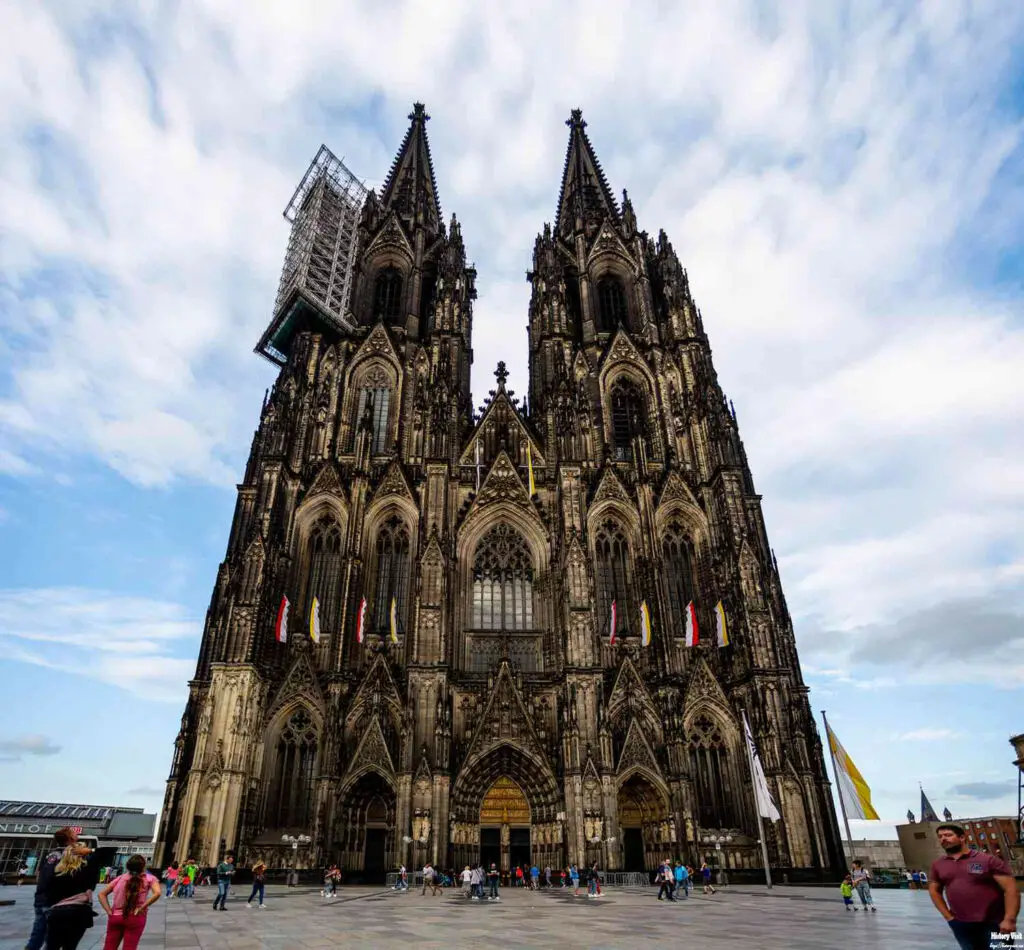
Introduction
Cologne Cathedral, also known as Kölner Dom, stands as a monumental testament to the ingenuity and artistry of Gothic architecture. Located in Cologne, Germany, this awe-inspiring cathedral is one of the largest and most impressive in the world, drawing millions of visitors each year. Its towering spires and intricate designs are a marvel to behold, reflecting the ambition and dedication of the generations who built and preserved it.
The significance of Cologne Cathedral extends beyond its architectural grandeur. It serves as a spiritual center, a repository of historical relics, and a symbol of the city’s resilience through centuries of turmoil. The cathedral’s storied past, marked by periods of construction, destruction, and restoration, adds layers of historical and cultural richness to its already impressive stature.
In this article, we will explore the multifaceted aspects of Cologne Cathedral, from its historical background and architectural features to its interior artistry and religious significance. We will also examine the efforts to preserve this Gothic masterpiece and its role in contemporary times. Through this comprehensive exploration, we aim to uncover why Cologne Cathedral remains an enduring icon of Gothic architecture and cultural heritage.
Historical Background
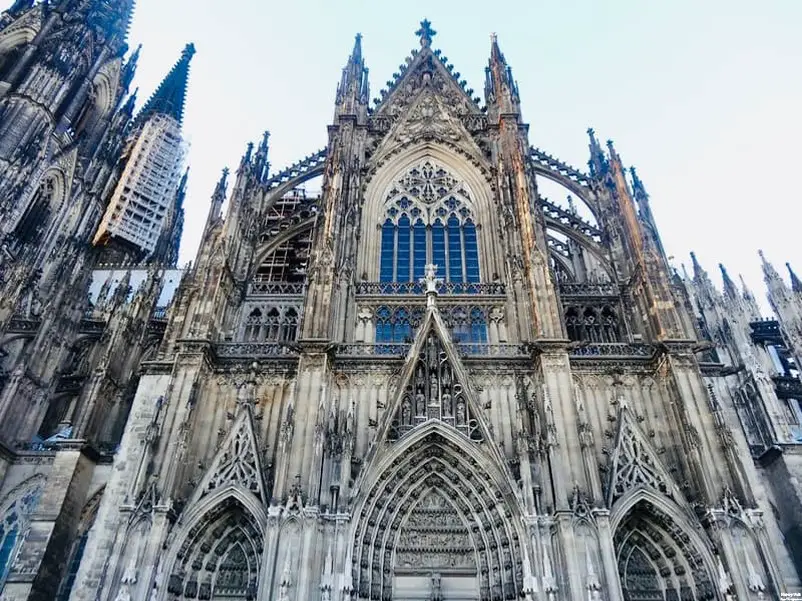
The origins of Cologne Cathedral date back to the early 4th century when the first Christian community established a church on the site. The current Gothic structure, however, began its journey in 1248 when Archbishop Konrad von Hochstaden laid the foundation stone. This ambitious project aimed to house the relics of the Three Magi, which were brought to Cologne from Milan in 1164, making the cathedral an important pilgrimage site.
Construction of the cathedral spanned several centuries, marked by intermittent progress and long periods of stagnation. The work was initially driven by a desire to create a structure that could rival the great cathedrals of France, incorporating advanced Gothic architectural techniques. However, by the mid-16th century, construction halted, leaving the cathedral incomplete for over 300 years. It wasn’t until the 19th century that efforts to complete the cathedral resumed, spurred by a renewed sense of national pride and historical continuity.
The completion of Cologne Cathedral in 1880 marked a significant achievement, not only for the city of Cologne but also for Germany as a whole. The cathedral’s history is a reflection of the city’s resilience and determination, surviving wars, political upheavals, and periods of neglect. Today, it stands as a symbol of unity and endurance, embodying the rich historical tapestry of the region.
Architectural Design and Features
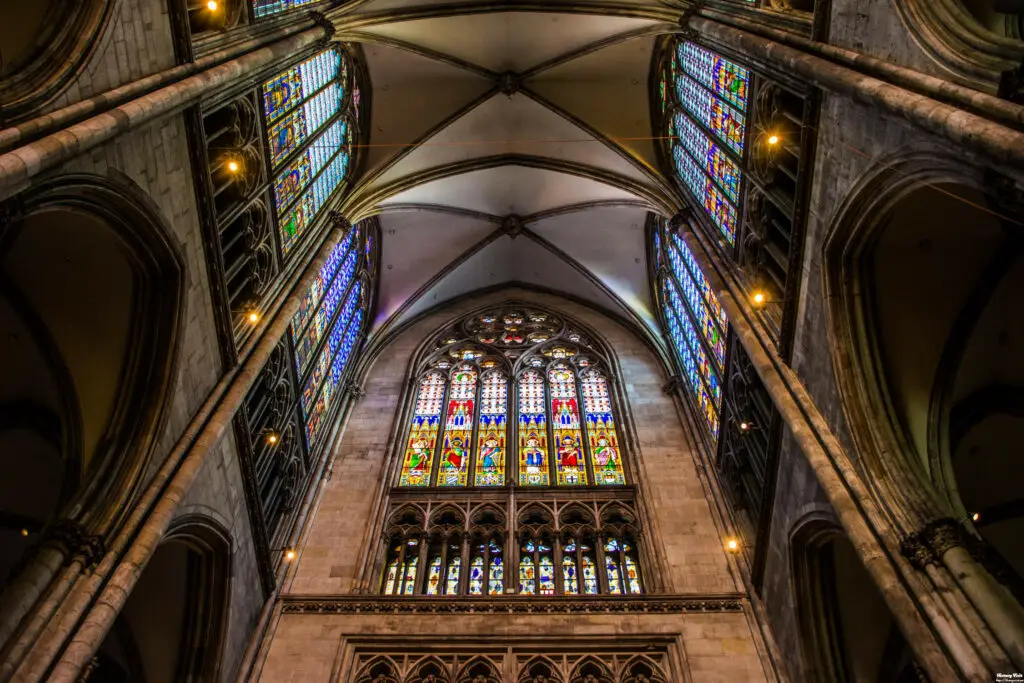
Cologne Cathedral is renowned for its grand design and impressive dimensions. The cathedral’s layout follows the traditional Latin cross plan, with a long nave, transepts, and a choir. Measuring approximately 144 meters in length, 86 meters in width, and soaring to a height of 157 meters at its twin spires, Cologne Cathedral is one of the tallest and largest Gothic cathedrals in the world.
A hallmark of Gothic architecture, the cathedral features several structural innovations that were revolutionary at the time. The use of flying buttresses, which support the building from the outside, allowed for higher and thinner walls, making room for larger windows. Ribbed vaults distribute the weight of the roof more efficiently, enabling the construction of expansive interior spaces without the need for thick supporting walls. Pointed arches, another key feature, direct the weight of the roof downward, providing additional stability and enhancing the cathedral’s verticality.
The facade of Cologne Cathedral is one of its most striking features. The west facade, adorned with detailed sculptures and intricate carvings, depicts scenes from the Bible and figures of saints. The twin spires, completed in the 19th century, dominate the skyline of Cologne and are visible from miles around. These spires are not only architectural feats but also symbols of the cathedral’s spiritual reach, pointing towards the heavens and inviting contemplation and reverence.
Interior Beauty and Artistry
The interior of Cologne Cathedral is as breathtaking as its exterior, filled with artistic and religious treasures. One of the most remarkable features is its stained glass windows, which date back to different periods in the cathedral’s history. These windows, with their vibrant colors and intricate designs, create a kaleidoscope of light that enhances the spiritual atmosphere of the space. Notable among them is the “Bayernfenster” in the south transept, a gift from King Ludwig I of Bavaria, depicting scenes from the Old and New Testaments.
The high altar of Cologne Cathedral is another focal point of interior beauty. Made of black marble and gilded with gold, it stands as a magnificent example of Gothic artistry. The altar is surrounded by intricate carvings and statues, including the Shrine of the Three Kings, a masterpiece of medieval goldsmithing. This shrine, which is believed to hold the relics of the Three Magi, is elaborately decorated with scenes from the life of Christ and figures of saints, adding to the cathedral’s religious significance.
In addition to the high altar, the cathedral houses several side chapels, each with its own unique decorations and altarpieces. These chapels provide intimate spaces for prayer and reflection, adorned with beautiful paintings, sculptures, and mosaics. The craftsmanship displayed in these interior elements reflects the skill and devotion of the artisans who worked on the cathedral over the centuries, creating a cohesive and harmonious blend of artistic styles.
Sculptural and Monumental Art
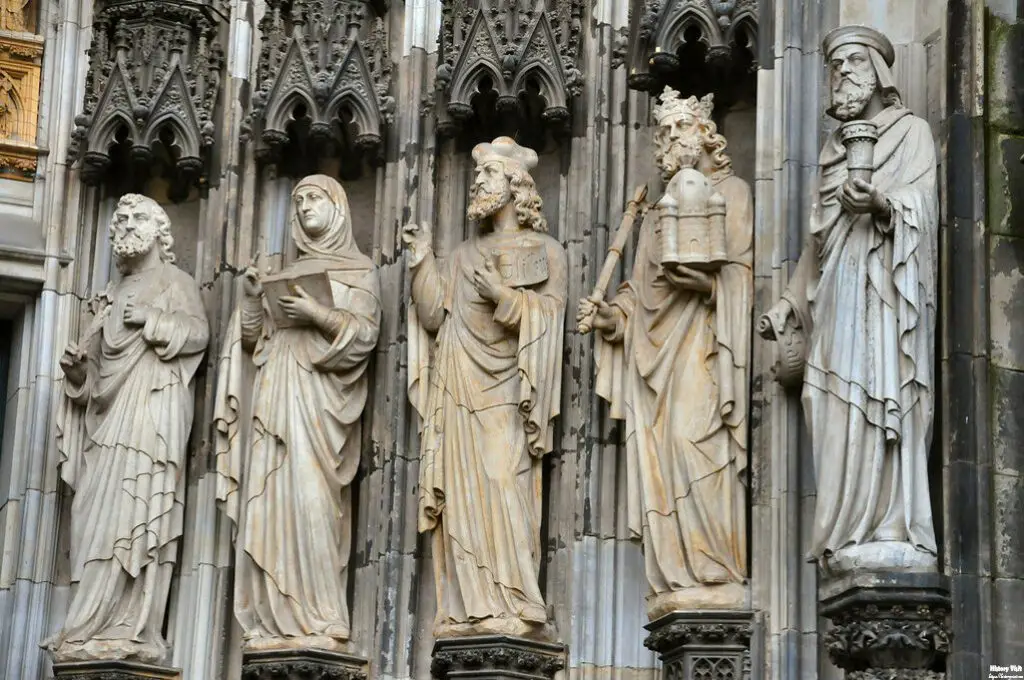
Cologne Cathedral’s exterior is adorned with an array of sculptures that add to its Gothic splendor. The portals, particularly the west entrance, are decorated with detailed carvings depicting biblical scenes and figures. These sculptures not only serve a decorative purpose but also convey theological messages and narratives, making the cathedral a visual representation of Christian teachings. The gargoyles and grotesques, typical of Gothic architecture, serve both functional and symbolic roles, acting as water spouts and warding off evil spirits.
Inside the cathedral, the Shrine of the Three Kings is undoubtedly the most significant monument. This gilded sarcophagus, believed to contain the remains of the Three Wise Men, is a masterpiece of medieval craftsmanship. Decorated with gold, silver, and precious stones, the shrine is a stunning example of religious art and a major attraction for pilgrims and visitors. Its presence underscores the cathedral’s importance as a spiritual and cultural center.
Beyond the Shrine of the Three Kings, Cologne Cathedral houses numerous other significant monuments and tombs. The choir area features intricately carved choir stalls and statues of saints, while the nave and aisles contain various memorials to notable figures. Poet’s Corner, inspired by the famous corner in Westminster Abbey, commemorates German poets, writers, and musicians, reflecting the cathedral’s role as a cultural as well as a religious landmark.
Religious and Cultural Significance

Cologne Cathedral has long been a major pilgrimage site, attracting visitors from around the world. Its religious significance is deeply rooted in its history, particularly due to the relics of the Three Magi. Pilgrims have traveled to Cologne for centuries to venerate these relics, and the cathedral continues to be a place of spiritual importance and devotion. The annual celebration of the Epiphany, marking the visit of the Magi to the Christ child, is a major event at the cathedral, drawing large crowds and highlighting its enduring religious role.
In addition to its role as a pilgrimage site, Cologne Cathedral hosts numerous significant religious ceremonies and events. These include ordinations, confirmations, and special masses that underscore the cathedral’s ongoing function as a center of Christian worship. The cathedral also plays a pivotal role in the life of the local Catholic community, providing a venue for regular services and community gatherings.
The influence of Cologne Cathedral on Gothic art and architecture is profound. Its innovative design and structural techniques have inspired countless other churches and cathedrals across Europe. The cathedral’s artistic and architectural legacy is a testament to the ingenuity of the medieval builders and the enduring appeal of the Gothic style. Its towering spires and intricate decorations continue to inspire awe and admiration, making it a key reference point in the study of medieval art and architecture.
Restoration and Preservation
The preservation of Cologne Cathedral has been an ongoing concern throughout its history. Significant restoration efforts began in the 19th century, particularly under the direction of Prussian architect Ernst Friedrich Zwirner, who oversaw the completion of the twin spires. These efforts were motivated by a desire to restore the cathedral to its former glory and complete the vision of its medieval builders. The 19th-century restoration aimed to repair and restore damaged elements while respecting the original Gothic design.
Modern preservation efforts face different challenges, including environmental factors, pollution, and the sheer age of the building. Recent projects have aimed to address these issues through meticulous cleaning and conservation techniques. For example, the cleaning of the stonework involves careful methods to remove accumulated dirt and pollutants while preserving the original material. Advanced techniques are also used to restore and protect the stained glass windows, ensuring that their vibrant colors and intricate designs remain intact.
Looking to the future, ongoing conservation plans are essential to maintain Cologne Cathedral’s condition. These efforts require collaboration between experts in various fields, including architecture, art history, and materials science. Funding and public support also play a crucial role in ensuring that this UNESCO World Heritage site remains protected for future generations to admire and study. The commitment to preserving Cologne Cathedral is a testament to its enduring cultural and historical significance.
Cologne Cathedral in Contemporary Times
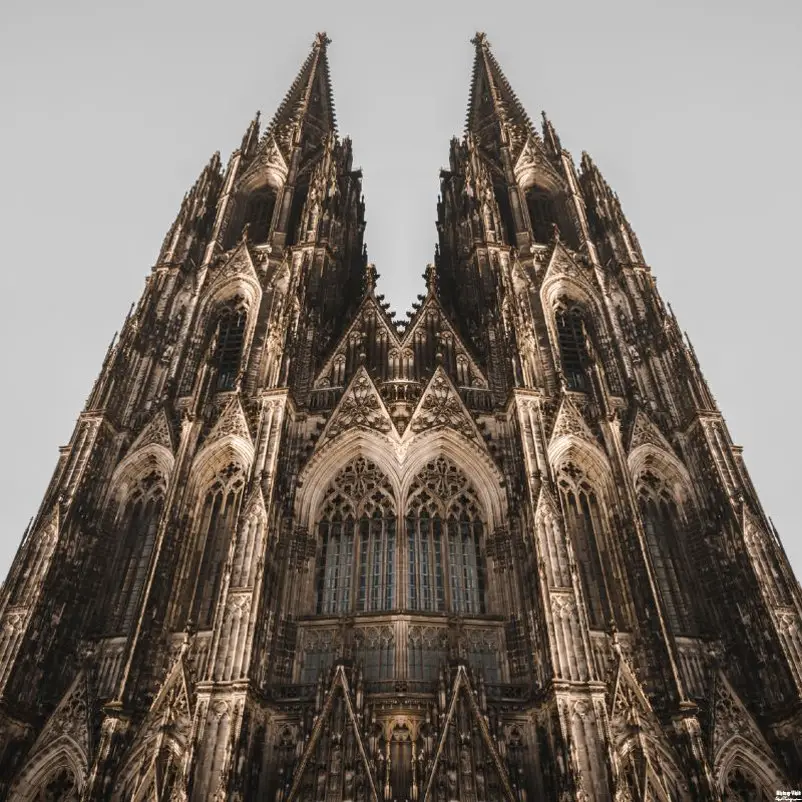
Today, Cologne Cathedral is a major tourist attraction, drawing millions of visitors each year. Its status as a UNESCO World Heritage site underscores its global significance and helps attract international attention. The cathedral’s majestic architecture, historical significance, and artistic treasures make it a must-see destination for those interested in history, art, and religion.
Despite its popularity as a tourist site, Cologne Cathedral remains an active place of worship. Regular services, including daily prayers, Sunday services, and special religious events, are held within its hallowed walls. The cathedral also hosts concerts and cultural events, blending its spiritual functions with its role as a cultural hub. This combination of religious and cultural activities ensures that the cathedral remains a vibrant part of the community.
The impact of Cologne Cathedral on contemporary culture extends beyond its immediate surroundings. It has been featured in numerous films, books, and works of art, symbolizing the enduring appeal of Gothic architecture. The cathedral’s silhouette is an iconic image associated with the city of Cologne, and its influence can be seen in various aspects of modern culture. Its continued relevance and popularity highlight the timeless beauty and significance of this Gothic masterpiece.
Conclusion

Cologne Cathedral stands as a pinnacle of Gothic mastery, embodying the architectural, artistic, and spiritual aspirations of its creators. Its historical journey from its origins in the 13th century to its completion in the 19th century reflects the determination and resilience of the generations who contributed to its construction and preservation. The cathedral’s towering spires and intricate designs continue to inspire awe and admiration, drawing visitors from around the world.
The cathedral’s enduring legacy is evident in its religious and cultural significance. As a major pilgrimage site, a venue for significant religious ceremonies, and a symbol of Gothic architectural innovation, Cologne Cathedral holds a special place in the hearts of believers and admirers alike. Its influence on Gothic art and architecture is profound, and its role as a cultural landmark ensures its continued relevance in contemporary times.
In conclusion, Cologne Cathedral is more than just a building; it is a testament to human creativity, devotion, and perseverance. Its majestic presence on the skyline of Cologne serves as a reminder of the enduring power of architectural beauty and the importance of preserving our cultural heritage for future generations to appreciate and cherish.


